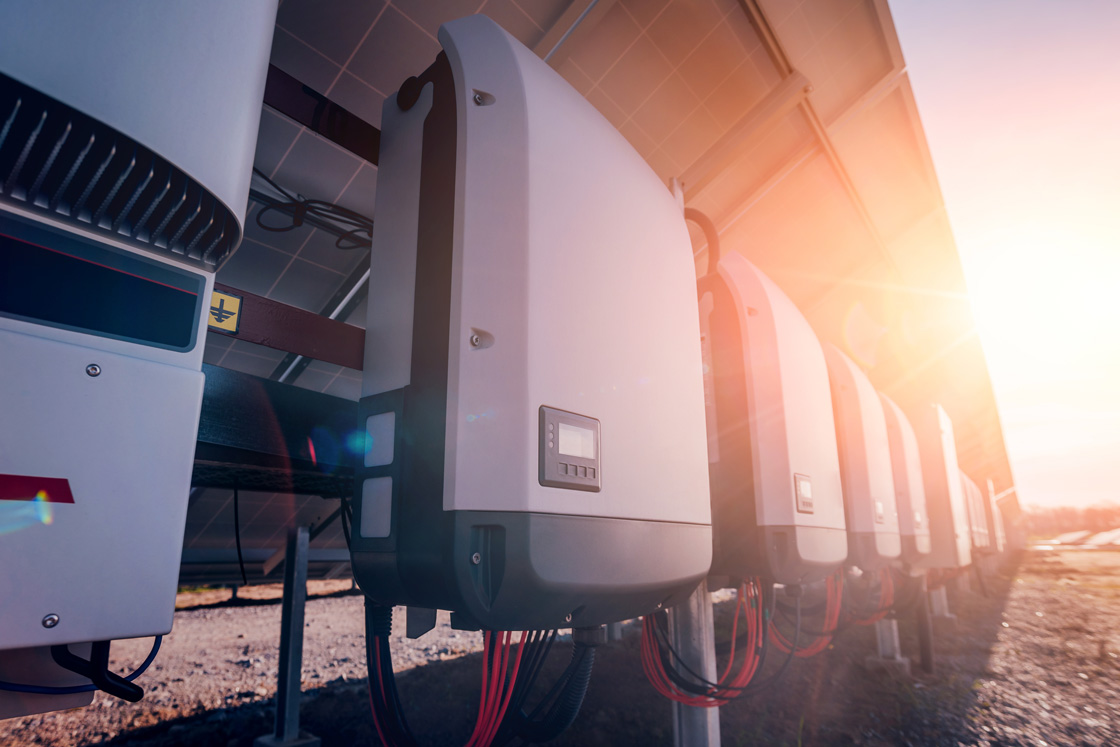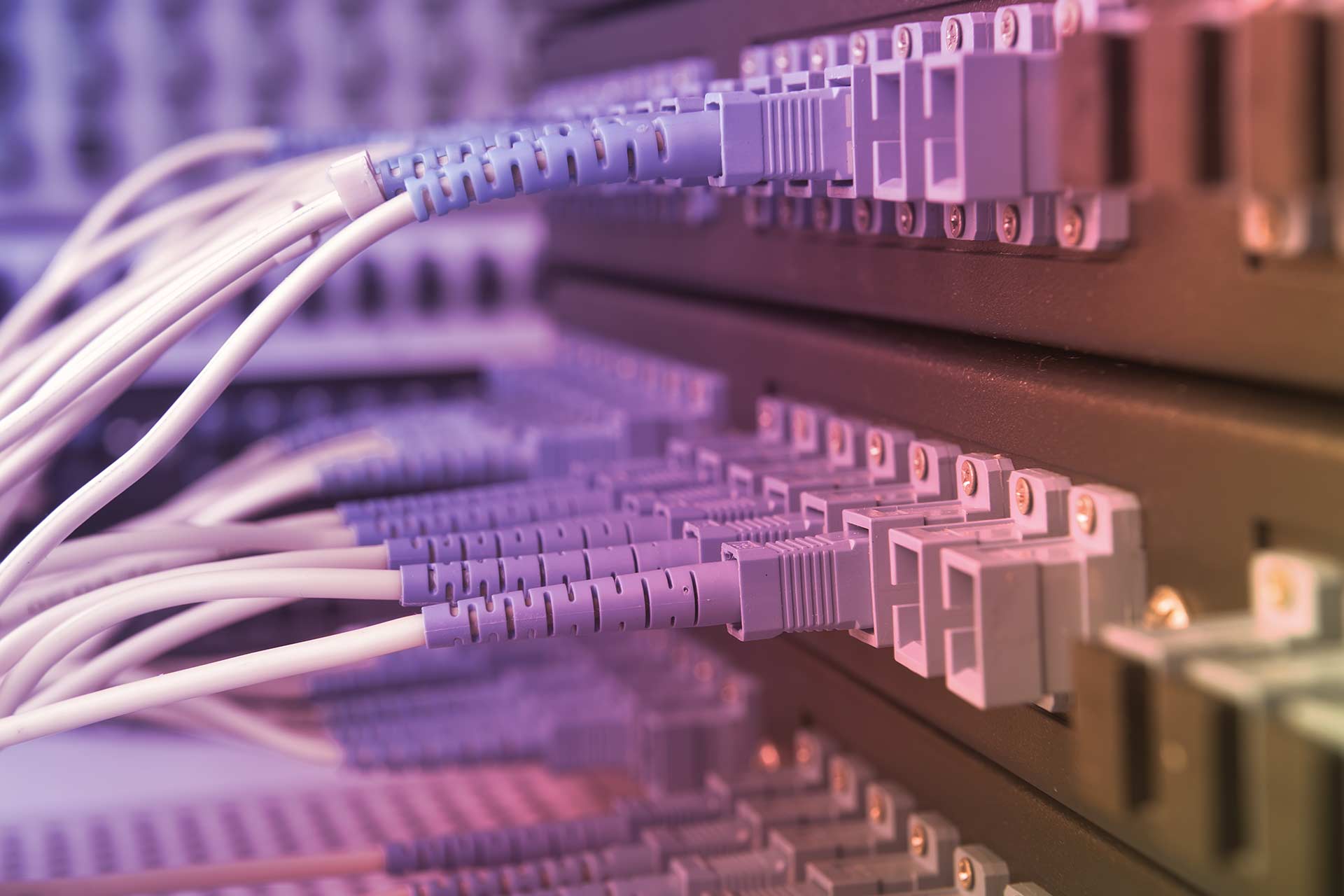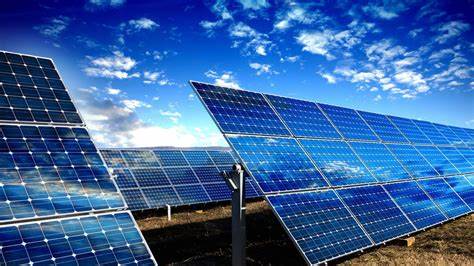What Is a Power Inverter? ESTEL Explains Its Uses and Functionality

A power inverter transforms direct current (DC) from sources like batteries or solar panels into alternating current (AC), enabling you to use conventional AC power for household or industrial devices. Its primary role is to bridge the gap between energy storage systems and appliances, ensuring uninterrupted functionality. High-quality inverters minimize energy loss, with some achieving efficiency rates as high as 98% using advanced technologies like Maximum Power Point Tracking (MPPT). As global adoption of solar panels and battery systems grows, the demand for reliable inverters continues to rise. ESTEL, a leader in power inverter technology, offers solutions designed to meet these evolving needs.
Key Takeaways
A power inverter changes DC power from batteries or solar panels into AC power. This lets you use regular household devices.
Picking the right inverter is important. Pure sine wave inverters work best for delicate electronics. Modified sine wave inverters are good for simple appliances.
To choose the right inverter size, add up the wattage of all devices you want to use. Add 20-30% extra for power surges.
Installing and taking care of your inverter helps it work safely and better. Make sure it has airflow and check the wires often.
Buying a good inverter gives you reliable performance for a long time. This is especially helpful for solar energy systems.
How Does a Power Inverter Work?

Understanding how a power inverter operates can help you make informed decisions when selecting one for your needs. At its core, the inverter changes DC power into AC power, enabling you to run standard electrical devices. Let’s break down the process and components that make this possible.
The DC to AC Conversion Process
The primary function of a power inverter is to perform the dc to ac conversion. Direct current flows in a single direction, while alternating current periodically reverses direction. Most household appliances require AC power, which is why this conversion is essential.
The process begins with the inverter drawing DC electricity from a source, such as a battery or solar panel. Inside the inverter, electronic circuits rapidly switch the DC current on and off, creating a waveform. This waveform is then shaped into an AC signal using advanced technologies. High-quality inverters produce a smooth sine wave, which closely resembles the electricity supplied by utility grids. This ensures compatibility with sensitive devices like computers and medical equipment.
Performance tests on photovoltaic inverters have shown that they meet strict reliability standards. These tests evaluate power quality, safety, and compliance with specifications. For example:
Prototypes undergo rigorous evaluations to ensure they meet reliability and safety requirements.
HALT (Highly Accelerated Life Testing) and humidity tests assess durability under extreme conditions.
Output power and waveform quality are measured to confirm performance.
Key Components of a Power Inverter
Several key components work together to ensure the inverter functions effectively:
Transformer: Converts voltage levels to match the requirements of connected devices.
Oscillator: Generates the switching signals needed to create an AC waveform.
Control Circuit: Regulates voltage and current to maintain stable output.
Cooling System: Prevents overheating by dissipating excess heat during operation.
These components must meet stringent standards to ensure long-term reliability. For instance:
Safety standards like IEC 62109 ensure safe operation.
Inverters are designed to last 15 to 25 years without significant failures.
High protection ratings (IP65 or higher) guard against dust and water ingress.
They must also handle short-term overloads and comply with electromagnetic compatibility (EMC) standards.
Efficiency and Performance Factors
Efficiency plays a critical role in determining how well an inverter performs. Modern inverters achieve high efficiency rates, often exceeding 90%, by minimizing energy loss during the conversion process. Independent testing laboratories measure efficiency at various power levels and input voltages. For example:
Measurement Type | Description |
|---|---|
Efficiency Measurements | Data from labs showing performance at different power and voltage levels. |
CEC Testing Protocol | Tests at six power levels (10%, 20%, 30%, 50%, 75%, 100%) and three input voltages. |
Field Test Results | Daylong measurements of AC and DC power under varying weather conditions. |
Heat dissipation also affects performance. Effective cooling systems ensure the inverter operates within safe temperature ranges, even in extreme environments. This is crucial for maintaining efficiency and preventing damage to internal components.
By understanding these factors, you can answer the question, "How does it work?" and choose an inverter that meets your specific needs.
Types of Power Inverters
Power inverters come in various forms, each designed to meet specific needs. Understanding the different types of inverters will help you choose the right one for your application. Let’s explore the most common options.
Modified Sine Wave Inverters
Modified sine wave inverters are a cost-effective solution for powering basic appliances. These inverters produce a waveform that approximates a sine wave but with a stepped or blocky pattern. While they are less efficient than other types of inverters, they are suitable for devices that do not require a pure sine wave.
Advantages:
Affordable and widely available.
Adequate for simple devices like power tools, lights, and older TVs.
Limitations:
Lower efficiency, typically ranging from 65% to 70%.
High total harmonic distortion (THD), which can reduce the performance of connected devices.
AC motors may operate at about 20% lower efficiency when powered by these inverters.
Inverter Type | Efficiency (%) | Total Harmonic Distortion (THD) | Cost Level |
|---|---|---|---|
Modified Sine Wave | 65-70 | High | Lower |
Pure Sine Wave | 85-90 | Low | Higher |
If you need an affordable option for non-sensitive electronics, a modified sine wave inverter might be the right choice. However, for devices requiring higher efficiency and cleaner power, you should consider other types of inverters.
Pure Sine Wave Inverters
Pure sine wave inverters are the gold standard for powering sensitive electronics. These inverters produce a smooth, sinusoidal waveform that closely matches the electricity supplied by utility companies. This makes them ideal for modern appliances and devices with complex circuitry.
Why Choose Pure Sine Wave?
Research shows that sensitive electronics powered by modified sine wave inverters experience higher failure rates due to incompatible waveforms. Pure sine wave inverters eliminate this risk by providing clean and stable power.
Pure sine wave inverters replicate the exact waveform supplied by utility companies, ensuring stable operation and protecting devices from power surges and overheating.
Applications:
Medical equipment.
Laptops.
Newer TVs.
Appliances with electronic timers.
Market Insights:
By 2025, the pure sine wave inverter segment is expected to dominate the market due to increasing sales of electronics and government incentives.
Although pure sine wave inverters are more expensive, their superior performance and reliability make them a worthwhile investment for critical applications.
Square Wave and Hybrid Inverters
Square wave inverters are the simplest and least expensive type. They generate a square-shaped waveform, which is incompatible with most modern appliances. These inverters are rarely used today due to their limitations. Hybrid inverters, on the other hand, combine the features of different inverter types to offer greater flexibility and efficiency.
Square Wave Inverters:
Suitable for very basic devices like simple motors.
Not recommended for sensitive electronics due to high harmonic distortion.
Hybrid Inverters:
Designed to work with renewable energy systems like solar panels.
Can switch between grid power and battery power seamlessly.
Often include advanced features like Maximum Power Point Tracking (MPPT) for improved efficiency.
If you are setting up a renewable energy system, a hybrid inverter can optimize your energy usage and provide a reliable power supply.
Common Applications of Power Inverters

Power inverters play a vital role in various applications, ensuring reliable power delivery in different scenarios. Whether you need a power backup solution for emergencies, industrial operations, or renewable energy systems, inverters provide the flexibility and efficiency required to meet your needs.
Emergency Backup Systems
A power inverter is an essential component of emergency backup systems. These systems ensure that critical devices and appliances remain operational during power outages. For instance, battery energy storage systems (BESS) equipped with inverters can deliver power within milliseconds, significantly faster than diesel generators, which may take up to 20 seconds to start. This rapid engagement is crucial for life safety systems, such as hospital equipment and emergency lighting.
Investing in a reliable power backup solution minimizes downtime and reduces financial losses during outages. The Avalon case study highlights how businesses across various sectors rely on backup systems to maintain continuity. Additionally, BESS systems offer enhanced efficiency and lower operating costs compared to traditional generators, making them a more economical choice for long-term use.
Industrial and Commercial Uses
In industrial and commercial settings, power inverters address challenges like grid instability and fluctuating energy demands. They enable energy independence and provide economic benefits by optimizing energy storage and management. The table below summarizes the advantages of using inverters in these applications:
Challenges | Advantages |
|---|---|
Grid Instability | Energy Independence |
Fluctuating Energy Demand | |
Energy Storage and Management | Flexibility |
Technical Complexity | Environmental Friendliness |
By integrating inverters into your operations, you can achieve greater flexibility and reduce your environmental impact. These systems also help manage energy more effectively, ensuring a stable power supply for critical processes.
Renewable Energy Systems (e.g., Solar Power)
Inverters are indispensable for renewable energy systems, especially solar energy systems. They convert the DC electricity generated by solar panels into AC electricity, which powers homes and businesses. Modern inverters maximize energy production by ensuring that the solar energy system operates at optimal voltage and frequency, aligning with grid requirements.
Advanced inverters also track the maximum power point (MPP) of solar panels, adjusting voltage and current levels to enhance efficiency. Additionally, they monitor system performance, detecting issues like shading or malfunctions. This ensures that your household solar system maintains high overall efficiency and delivers consistent power output.
If you’re considering a solar energy system, a high-quality inverter is key to optimizing energy usage and ensuring long-term reliability. It’s also a critical component for portable power solutions, enabling you to harness clean energy wherever you go.
Practical Considerations for Choosing and Using a Power Inverter
Determining the Right Capacity
Choosing the right capacity for your inverter ensures it meets your energy needs without overloading or wasting resources. To calculate the required capacity, you need to consider the total wattage of all devices you plan to power. Add a safety margin of 20-30% to account for power surges or additional devices.
For example, if your appliances require 1,000 watts, select an inverter with at least 1,200 watts of capacity. Advanced scenarios, such as renewable energy systems, may require more precise calculations. The table below highlights factors like inverter efficiency and annual degradation rates that influence capacity planning:
Performance Area | 2021 | 2035, Conservative Scenario | 2035, Moderate Scenario | 2035, Advanced Scenario |
|---|---|---|---|---|
Bifaciality factor | 0.65 | 0.65 | 0.85 | 0.85 |
Albedo | 0.2 | 0.2 | 0.2 | 0.3 |
DC losses | 14.1% | 14.1% | 10.4% | 7.5% |
Inverter efficiency | 96% | 96% | 98% | 98% |
Annual degradation rate | 0.7% | 0.7% | 0.5% | 0.2% |
Use these metrics to optimize your system's performance and ensure long-term reliability.
Connection Methods and Installation Tips
Proper installation is critical for safe and efficient operation. Start by identifying the correct connection method for your setup. For example, connect the inverter directly to a battery for standalone systems or integrate it with a solar panel system for renewable energy applications.
Follow these tips during installation:
Use appropriately sized cables to minimize voltage drops.
Place the inverter in a well-ventilated area to prevent overheating.
Secure all connections tightly to avoid power loss or short circuits.
If you're unsure about the installation process, consult a professional to ensure compliance with safety standards.
Safety Precautions and Maintenance
Safety should always be a priority when using an inverter. Follow these precautions to protect yourself and your equipment:
Avoid overloading the inverter by exceeding its capacity.
Keep the device away from flammable materials.
Regularly inspect cables and connections for wear or damage.
Routine maintenance also extends the lifespan of your inverter. Clean the cooling vents to prevent dust buildup and check the battery voltage periodically. By following these steps, you can ensure your inverter operates efficiently and safely for years to come.
ESTEL’s Recommendations for Reliable Inverters
When selecting a reliable inverter, you should prioritize products that meet high standards for performance and durability. ESTEL recommends focusing on key factors that enhance reliability and ensure long-term functionality. These recommendations stem from extensive evaluations and industry insights.
Prioritize DC/AC Inverter Reliability
The DC/AC inverter plays a critical role in maintaining system reliability. Failures in this component can disrupt power delivery and compromise the performance of connected devices. ESTEL designs its inverters with advanced technologies to minimize the risk of failure. By improving the reliability of this core component, you can ensure consistent power output and reduce downtime.
Choose the Right Configuration
System configuration significantly impacts inverter reliability. Centralized configurations often experience higher failure rates compared to string or multistring setups. ESTEL recommends using string or multistring configurations for better performance and reliability. These setups distribute power more effectively and reduce the likelihood of system-wide failures.
Performance Evaluation Insights
ESTEL’s recommendations are backed by performance evaluation reports that highlight critical findings. The table below summarizes these insights:
Findings | Implications for Reliability in Power Inverters |
|---|---|
The DC/AC inverter is identified as the most critical component for reliability. | Focus on improving the reliability and availability of DC/AC inverters to prevent failures. |
Reliability decreases significantly in centralized configurations compared to string and multistring configurations. | Consider alternative configurations to enhance overall system reliability. |
By following these recommendations, you can select an inverter that meets your needs while ensuring long-term reliability. ESTEL’s commitment to quality and innovation makes its products a trusted choice for residential, commercial, and industrial applications.
A power inverter transforms DC electricity into AC power, enabling you to use standard devices efficiently. Selecting the right type and capacity ensures optimal performance for your specific needs. For example, real-time inverter-based control quickly resolves power system issues, while advanced techniques like synchrophasors enhance grid reliability. Studies show that inverters achieve maximum efficiency at irradiance levels above 350 W/m², making them ideal for solar applications. ESTEL’s innovative designs and reliable solutions make it a trusted choice for residential, commercial, and industrial use.
FAQ
What is the difference between a pure sine wave inverter and a modified sine wave inverter?
A pure sine wave inverter produces a smooth, consistent waveform, ideal for sensitive electronics. A modified sine wave inverter generates a blocky waveform, suitable for basic devices. Pure sine wave inverters offer better efficiency and compatibility but cost more.
Tip: Use pure sine wave inverters for modern appliances like laptops and medical equipment.
Can I use a power inverter with solar panels?
Yes, you can. Power inverters convert the DC electricity from solar panels into AC electricity for household use. Choose an inverter compatible with your solar system's capacity and voltage for optimal performance.
Note: Hybrid inverters are excellent for solar setups, offering seamless switching between grid and battery power.
How do I calculate the right inverter capacity for my needs?
Add the wattage of all devices you plan to power. Include a 20-30% safety margin for surges. For example, if your devices need 1,000 watts, select an inverter with at least 1,200 watts capacity.
Example: A refrigerator (800W) and a TV (200W) require a 1,200W inverter.
Are power inverters safe to use?
Yes, when used correctly. Follow safety precautions like avoiding overloading, keeping the inverter away from flammable materials, and ensuring proper ventilation. Regular maintenance, such as cleaning vents and checking connections, also enhances safety.
Alert: Always use inverters with built-in protection features like overload and short-circuit safeguards.
How long does a power inverter last?
A high-quality inverter can last 10-15 years or more with proper use and maintenance. Factors like operating conditions, cooling systems, and build quality influence its lifespan.
Tip: Choose inverters with high protection ratings (e.g., IP65) for durability in harsh environments.
See Also
Understanding the ESTEL Power System for Telecom Cabinets
Telecom Cabinets: The Role of Solar Inverters and Batteries
Energy Storage Solutions for Telecom Cabinets with ESTEL Microgrid
An Introductory Guide to Telecom Power Supply Systems
Essential Features of Telecom Power Supply Systems Explained
CALL US DIRECTLY
86-13752765943
3A-8, SHUIWAN 1979 SQUARE (PHASE II), NO.111, TAIZI ROAD,SHUIWAN COMMUNITY, ZHAOSHANG STREET, NANSHAN DISTRICT, SHENZHEN, GUANGDONG, CHINA

